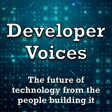
Graphite: Image Editing as a Syntax Tree (with Keavon Chambers & Dennis Kobert)
Graphite is a new image editor with an interesting architecture - it’s a classic UI-driven app, an image-manipulation language, and a library of programmable graphics primitives that any Rust coder could use, extend or add to. The result is something that you can use like Photoshop or Inkscape, or make use of in batch pipelines, a bit like ImageMagick.
Joining me to discuss it are Keavon Chambers & Dennis Kobert, who are hammering away on building a project that’s potentially as demanding as Photoshop, but with a more ambitious architecture. How can they hope to compete? Perhaps in the short term by doing what regular image And is the future of image editing modular?
–
Graphite Homepage: https://graphite.rs/
Graphite Web Version: https://editor.graphite.rs/
Graphite on Github: https://github.com/GraphiteEditor/Graphite
Signed Distance Fields: https://jasmcole.com/2019/10/03/signed-distance-fields/
Support Developer Voices on Patreon: https://patreon.com/DeveloperVoices
Support Developer Voices on YouTube: https://www.youtube.com/@developervoices/join
Kris on Bluesky: https://bsky.app/profile/krisajenkins.bsky.social
Kris on Mastodon: http://mastodon.social/@krisajenkins
Kris on LinkedIn: https://www.linkedin.com/in/krisjenkins/
